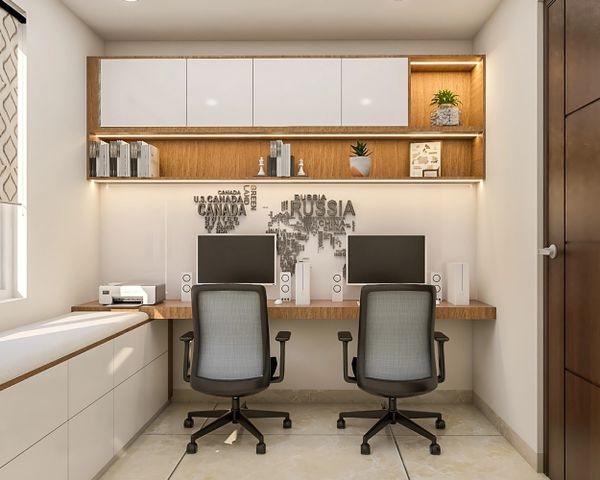
When it comes to designing corporate office spaces, every aspect is carefully considered to create an environment that fosters productivity, creativity, and a positive work culture. One crucial element of office interior design is the use of color. Colors have the power to evoke emotions, influence moods, and even affect productivity in the workplace. Understanding the psychology of color is essential for creating a harmonious and functional workspace that aligns with the company’s goals and values.
The Impact of Color on Employee Productivity
Warm Colors
- Colors like red, orange, and yellow are considered warm colors.
- They are known to evoke feelings of energy, enthusiasm, and warmth.
- These colors can be used in common areas or meeting rooms to promote creativity and collaboration among employees.
Cool Colors
- Colors like blue, green, and purple are classified as cool colors.
- They have a calming effect and are often associated with focus and productivity.
- Using cool colors in work areas can help employees stay focused and have a sense of tranquility.
Neutral Colors
- Colors like white, gray, and beige are considered neutral colors.
- They provide a sense of balance and can help create a clean and professional environment.
- Neutral colors are often used as a base color for office interiors and can be complemented with pops of warm or cool colors.
Creating a Positive Work Environment
Colors can also play a significant role in shaping the overall atmosphere of a corporate office and contributing to employee well-being.
Boosting Morale
- Using vibrant colors like yellow or orange can boost morale and create a sense of optimism among employees.
- These colors are associated with happiness and can help combat feelings of stress or fatigue.
Reducing Stress
- Soft blues and greens are known for their calming effect and can help reduce stress levels in the workplace.
- Creating designated relaxation areas with these colors can provide employees with a space to unwind and recharge.
Promoting Focus
- Using muted tones like gray or taupe in work areas can promote focus and concentration.
- These colors help create a sense of stability and can prevent distractions in the work environment.
Brand Identity and Color Selection
Color choices in corporate office interior design should also reflect the company’s brand identity and values.
Consistency with Branding
- Using the company’s brand colors in the office space can reinforce brand identity and create a cohesive look.
- It helps employees and visitors associate the physical environment with the company’s values and mission.
Customizing Color Palettes
- Customizing color palettes to reflect different departments or areas within the office can create a sense of diversity and inclusivity.
- Each department can have its own color scheme while still aligning with the overall branding of the company.
Conclusion
Color plays a crucial role in corporate office interior design, influencing employee productivity, well-being, and brand identity. By understanding the psychology of color and its impact on individuals, companies can create office spaces that are not only visually appealing but also conducive to a positive work environment. Whether it’s energizing with warm colors, calming with cool tones, or reflecting brand values through color choices, incorporating the right colors in office design can make a significant difference in the overall success of a business.